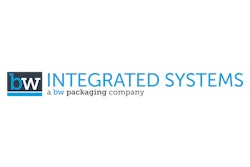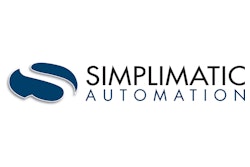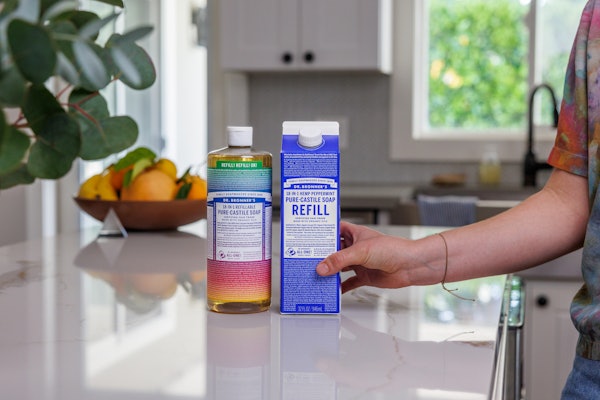Shortly after building a brand new brewery near the Puget Sound in Woodinville, WA, Redhook Ale Brewery went back to the drawing boards to design a facility for the opposite coast: Portsmouth, NH. And why not? As vice president of brewing Al Triplett puts it, "It lets us serve eastern markets from an eastern plant." The Portsmouth plant has produced beers commercially for about a year now. Housing one keg line and one 12-oz bottling line, it contains some of the same proven equipment used at Woodinville. At the heart of the 375-bpm bottling line, for example, is a similar Krones (Franklin, WI) labeler and the same Krones monoblock rinser/filler/crowner that runs at Woodinville. Again, the filler is "unbelievably accurate," says Triplett. It also guarantees the low levels of residual oxygen that Redhook requires to keep its non-pasteurized, cold-filled beer fresh. And the entire rinser/filler/crowner block has the standard-setting clean-in-place system developed originally for the Woodinville bottling line. But the Portsmouth line is no clone of its western counterpart. One key difference between crowning and labeling is the inclusion of a large accumulation table supplied by Ambec (Owings Mills, MD). "If there's a delay on the line, it's often because labels need to be replenished, or there might be a jam if labels don't get picked cleanly from the magazine," says Triplett. "This accumulation table gives us about 17 minutes to take care of such things without having to shut down the filler block. Keeping the filler running steadily can make a big difference in overall efficiency." Measuring 8' x 24', the accumulation table is made up of hundreds of 1/4" diameter stainless- steel rods. Driven by one motor, these rods rotate in place to propel bottles smoothly along. "We looked at a number of accumulation tables," says Triplett. "We really liked the roller system on the Ambec equipment because it's very smooth-running. You don't get a bottle sticking or hanging up somehow." Also significant is that bottles are handled on a first-in/first-out basis. Bottles that enter the accumulation table due to a downline jam don't reverse direction when the jam is cleared and return to the conveyor from which they entered. Instead, they proceed in the direction of the labeler. "That means the cold-filled beer doesn't have as much chance to warm up and cause condensation to form on the bottle," says production manager Doug MacNair. "It makes it easier to apply a label." "We also like the addition of the accumulation table because if we're going from one product to another, one operator can handle the switchover on the labeler," adds Triplett. As he and MacNair describe this process, the product whose run is finished is pushed out of the filling system by the next beer scheduled to run. If the operator handling the labeler doesn't have the old labels out and the new ones in by the time the filler is recharged with the new beer, filling can commence anyway since the accumulation table will provide another 17 minutes in which to complete the task. TLC for labels Like Woodinville's, the Portsmouth bottling line is designed to minimize damage to bottle labels. A good example is the way bottles are carried on a matte-top chain conveyor from the labeler to the case packing machine. An Ambec diverter/laner, using a sensor to count bottles and activate its diverter gate at a predetermined count, splits the flow of bottles in half. Then two more diverter/laners again split the bottles until four single-file lanes, each separated by rails, are created. "Often bottles flow in a mass, which allows them to grind against each other as they push their way along," says Karl Rakowski, an Ambec electrical controls engineer. "Here we're controlling them so that while they may touch each other in their individual lanes, there's no spinning or grinding as there would be with mass flow conveying." The use of variable frequency drives means that the Baldor (Fort Smith, AR) motor powering the conveyor line modulates its speeds from a standstill to whatever speed is needed. This greatly relieves the buildup of back pressure, again helping to protect labels from damage. Corrugated reshippers receive gentle handling as well, particularly on the long stretch of the overhead Ambec conveyor that leads full cases to the palletizer. If there's a stoppage or delay at the palletizer, and cases begin to accumulate, the backed-up cases block a photocell that signals pop-up bars in that 10' section to lift the cases off the mat-top conveyor belt. This prevents scuffing and ink rub-off. If the delay continues and additional cases accumulate, photocells farther up the line are blocked and the pop-up bars in those conveyor sections are activated. When the case packer resumes operation, the photocells are cleared as cases resume their forward progress. So the pop-up bars retract, gently depositing the cases back on the moving conveyor. Among the line design features at Woodinville that Redhook duplicated in Portsmouth is the "cluster" approach it took in positioning equipment. For example, the depalletizer, palletizer, and pallet stretch wrapper are arranged in one smooth linear flow with minimal distance between units. This allows one operator to attend to all three machines. Adding to overall efficiency is an automatic pallet stacker between depalletizer and palletizer; all three units were supplied by Crown Simplimatic (Lynchburg, VA). The stacker receives empty pallets from the depalletizer and feeds them to the palletizer. "It means you don't have to pick up the stack of empty pallets and load them into the pallet magazine of the palletizer," says MacNair. "You put full pallets of empty glass into the depal and you take pallets of filled glass away from the stretch wrapper without ever having to touch the pallets." First Redhook stretch wrapper At the end of the line, just a few yards away from the depalletizer that marks the beginning, is an Octopus stretch wrapper from ITW Muller (Glenview, IL). According to Triplett, it's proven so valuable in Portsmouth that this summer Redhook added one to the end of the bottling line in the Woodinville plant. "The wrapper in Portsmouth was our first automated wrapper as a company," says Triplett. "We'd always hand-wrapped pallet loads in the past." A short length of roller conveyor at the discharge of the stretch wrapper makes life easier for the forklift driver who puts product into the refrigerated warehouse. "He doesn't have to run over and get a pallet as soon as it's wrapped," says MacNair. "He can let two or three pallets build up while he takes care of other tasks and then come to take the pallets to the warehouse." Sanitation is an absolute obsession at Redhook, where beer is never pasteurized but cold-filtered instead. The beer is stored and shipped under refrigeration as well, though at retail it's typically merchandised at room temperature along with other brews. Shelf life, says Triplett, is 115 days. The bottling date is stamped onto each label just before it's applied to the bottle. Label copy tells the consumer that refrigeration will keep the beer fresh "for months after the 'bottled on' date." Corrugated reshippers are code-dated, too, by a Videojet (Wood Dale, IL) ink-jet coder. "The codes are important," says Triplett. "We want to make it easy for a stockperson or distributor or anyone along the way to keep the stock rotating. Also ink-jetted on the case is a code that lets us trace the contents of that case all the way back to raw materials used in brewing." Should any questions about a production lot ever arise, this code will provide a lot of answers, says Triplett. Redhook's passion for sanitation is greatly aided, he says, by the design of the Ambec matte-top conveyors that carry bottles through most of the line. The matte surface on which bottles ride is elevated slightly from the actual framework of the conveyor, which makes it easy to spray and clean the conveyor as needed. "It's one of those little things," admits MacNair, which, he notes, have a way of adding up. Equally unobtrusive but contributing greatly is the software/ hardware combination that integrates the line. It was largely Ambec's responsibility to bring it all together. Each major machine in the line was delivered with a PLC on board. Each of them is networked through a host PLC, so an operator on the bottling line has access to the same real-time information as his colleagues in the brew house. "Because the line is linked as it is, I'm able to capture downtime data, rejects, efficiencies, month-to-month comparisons, and other information right in my office," says MacNair. Assisting Redhook in designing the control system was Steve Carter of L.T. Solutions (Portsmouth, NH). As he puts it, "The way the pieces are interconnected makes them a sum that's considerably greater than any of its individual parts." A fitting description of the Portsmouth line itself.
































